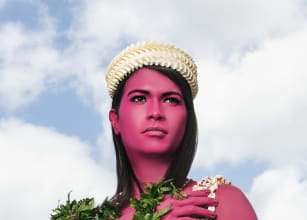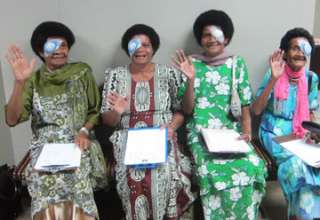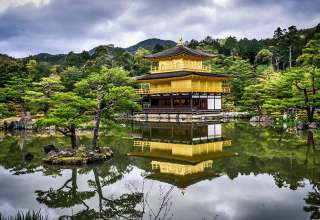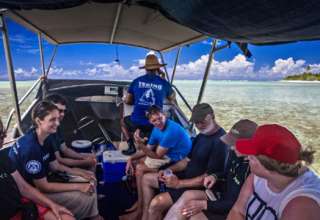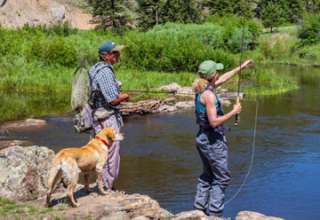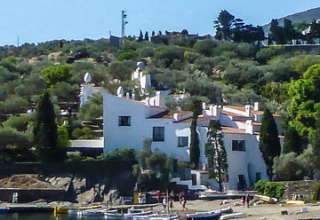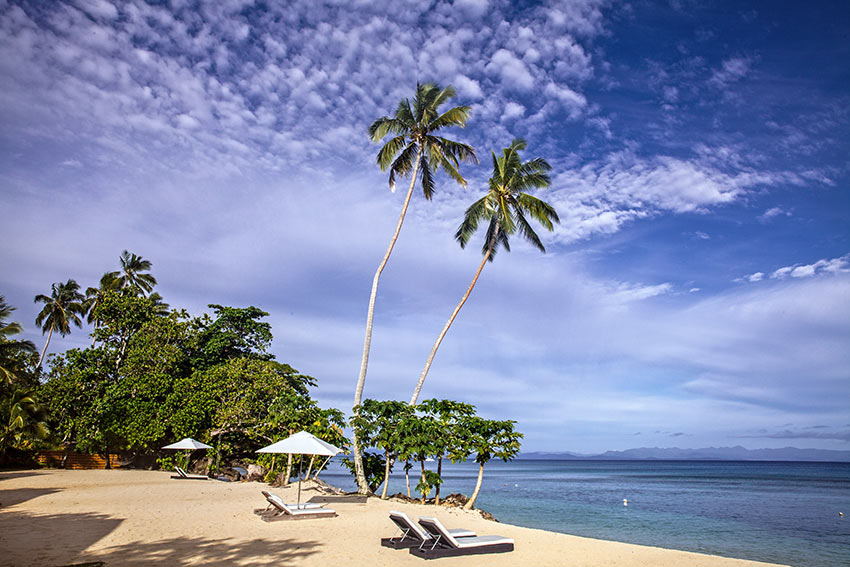
TAVENUI, Fiji – If Fiji was nothing more than sand, sea and palm fronds, it wouldn’t matter which beach resort you went to. Every vacation would be just like the last one, another been-there, done-that.
But after 15 years and as many visits to this 333-island nation, deep in the South Pacific, I’ve got a pretty good idea why every resort offers a unique experience. It’s the Fijians, themselves, thrilled to be showing you their country, who make the difference.
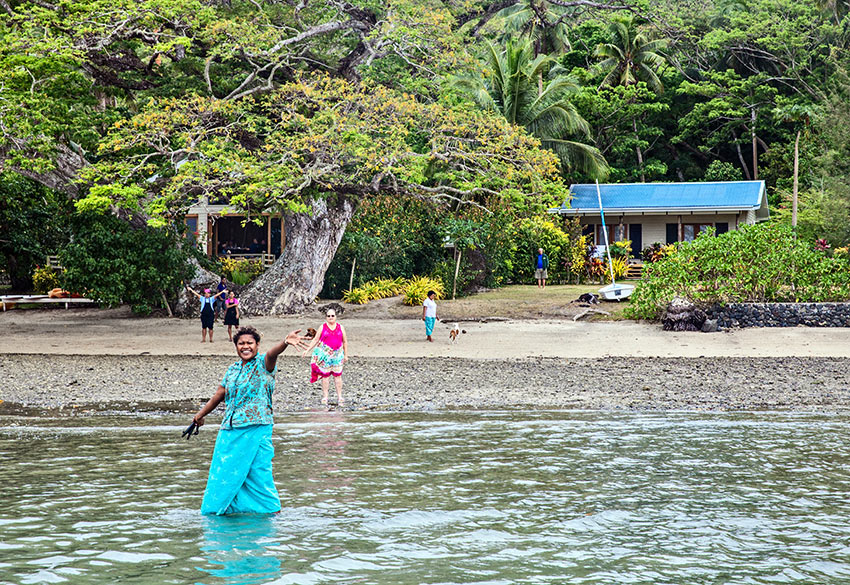
Sau Bay Fiji Resort, on Vanua Levu, Fiji’s second largest island, was the first stop on my most recent trip to the islands. Still jet-lagged, I was sitting on the lodge’s front, gazing over the bay, when the bushes below me began to wobble and two hands and a pair of clippers appeared, followed by a head.
Then the head looked up, saw my feet, and without missing a beat asked me what I thought of the umbrella-like trees towering over the lodge. Thus was my introduction to the owner, Nigel Douglas, a fifth-generation Fijian and a Scotsman by ancestry.
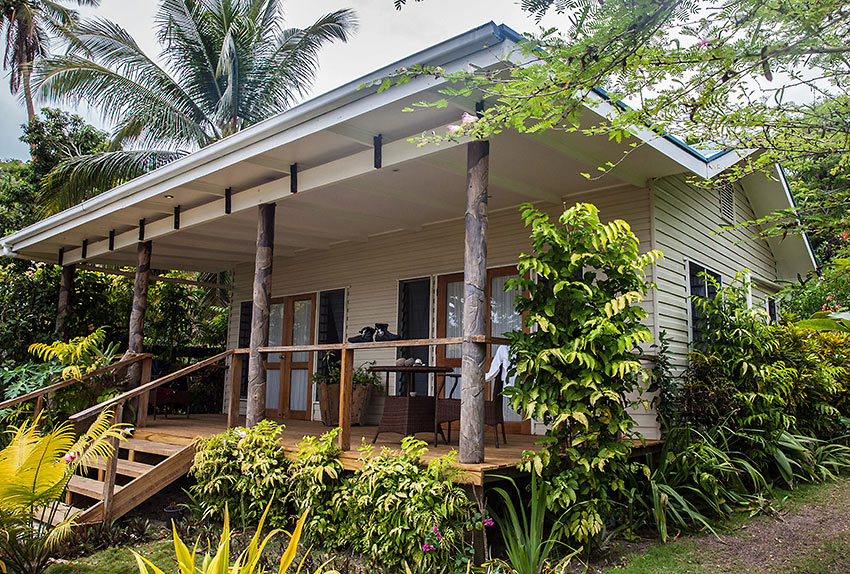
“These are rain trees,” he said, affectionately patting a gnarled trunk. “I took one look and I knew this was the place for me. You don’t often see these trees so close to the shore – salt water, you know – but they’re thriving. And look at these tiny white flowers. These bushes are native plants, and they’re rare. He paused, scanning the hillside. “This was bare when we bought it. Carol and I planted everything you see.”
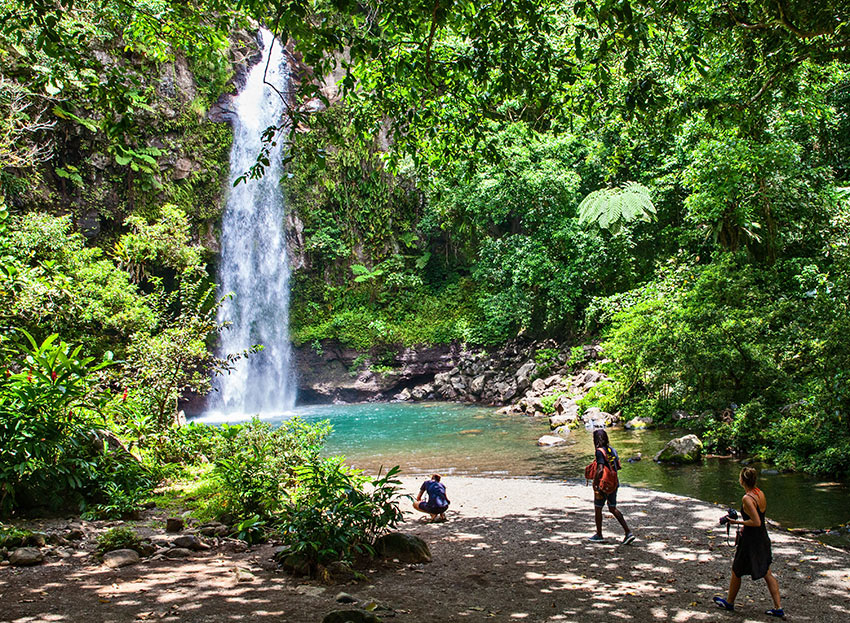
“How did you ever find this bit of beach,” I asked. “We couldn’t see the lodge until we’d crossed most of the bay and turned the corner.”
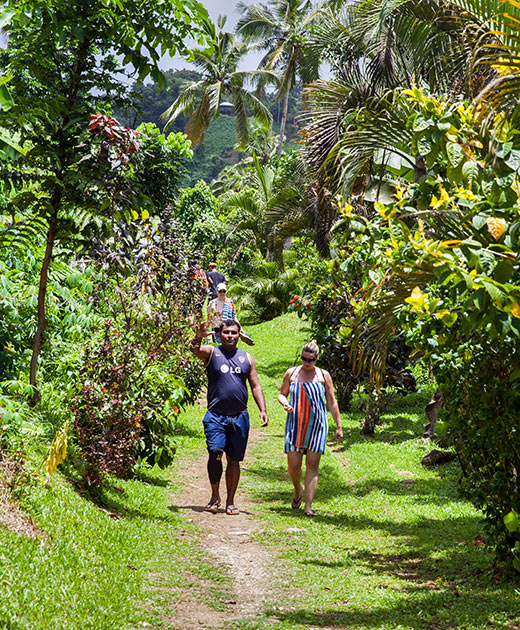
“That’s easy,” he said, as if the truth was obvious. “Fiji is home. I’ve been around most of these islands, dived every reef. Anything you want to know, people, politics, gardens, just ask. Are you a wine drinker? Let’s meet at dinner.”
I’d already met Carol, who emerged from her garden to show me around Sau Bay’s four ocean-view bures (BOOR-ays, i.e. cottages), with twin or king beds, mosquito netting, private baths, coffee makers, a cookie jar and air conditioning.
Courteous but casual, she and Nigel and Carol welcome all the guests like family, suggesting activities but never pushing. On most mornings Carrol worked at her desk while Dive Master Nigel suited up to guide the resort’s six other guests to the famous Rainbow Reef and the Great White Wall, 15 minutes away on the dive boat.
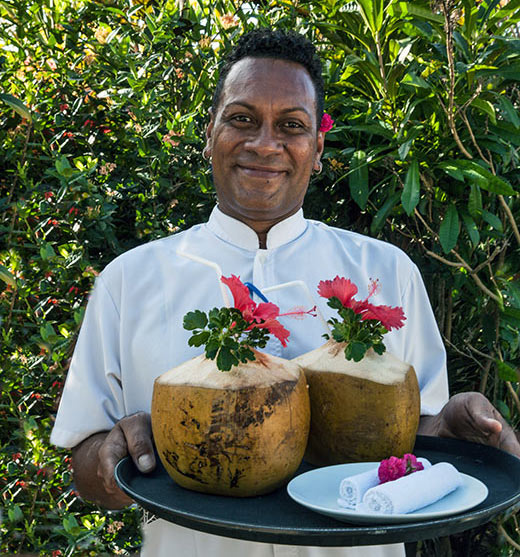
That left private time to kayak across the bay, hike up the hill, and tour nearby Kioa Island (guided by assistant manager Sarah), now the home of the Polynesians from Tuvalu, who have been forced off their native island by rising ocean levels.
Waving farewell, we headed to the next stop, Tides Reach Resort, on Taveuni, Fiji’s Garden Isle. Expecting a check-in desk, I was welcomed like royalty as the staff – ten smiling Fijians – lined up with hearty “bulas” and firm handshakes. “You must be thirsty,” said bartender William Celua, eyes twinkling, handing me Fiji’s traditional welcome drink, fresh coconut water.
Just five years old, Tides Reach is still growing, adding an on-site dive and additional bures, each an uncluttered white with minimalist furnishings and bold Asian and Fijian art. The lounge/bar/dining area combination, open on two sides acing the ocean, was airy and spacious.
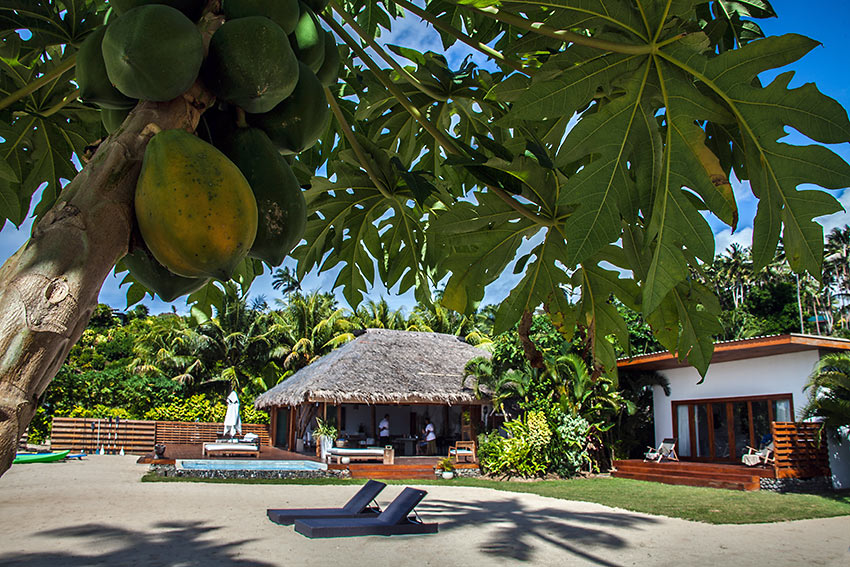
“It’s beautiful, isn’t it?” said Guest Relations Manager, Paul Gonebeci, motioning me to a plump white sofa. “Let’s sit for a minute, then I’ll show you around,” he said, handing me a list of activities. “Some people don’t want to do anything but relax,” he added, nodding toward the beach where a guest lay under an umbrella, reading. “But you’ll probably need a guide for hikes to the waterfalls, so we should pick a time now.”
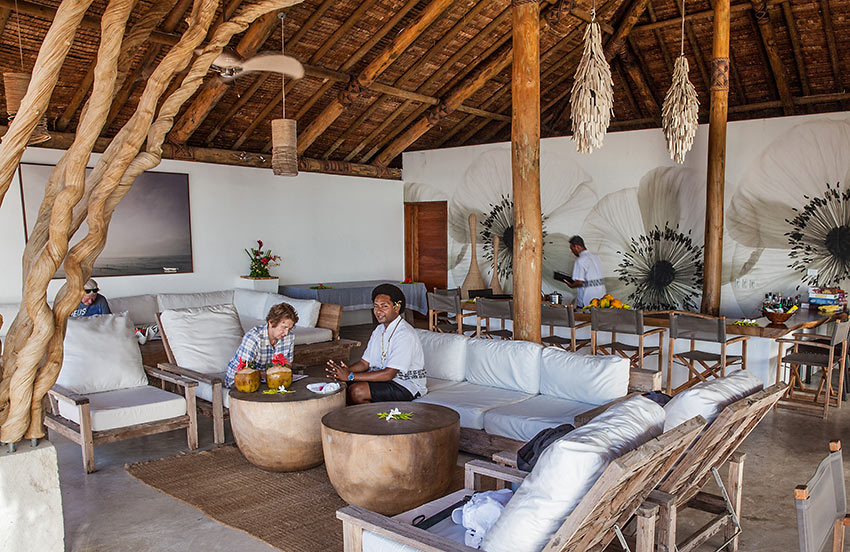
With a free afternoon ahead, Gonebeci suggested snorkeling around Honeymoon Island, across the bay. Snorkeling slowly in 20 feet of glass-clear water, our guide, Niu Lebaivalu led the way over the coral reef, one of many damaged in February 2016 when cyclone “Winston” roared through Fiji.
Small clumps of new coral — yellow, red and sandy beige – looked healthy. But the dead coral, looking like piles of brown sticks, was scattered everywhere, left on the bottom after the cyclone moved on.
“It was a category five storm, the worst one ever” said Lebaivalu. “They say it’s because the Pacific Ocean is warmer now than it used to be.”
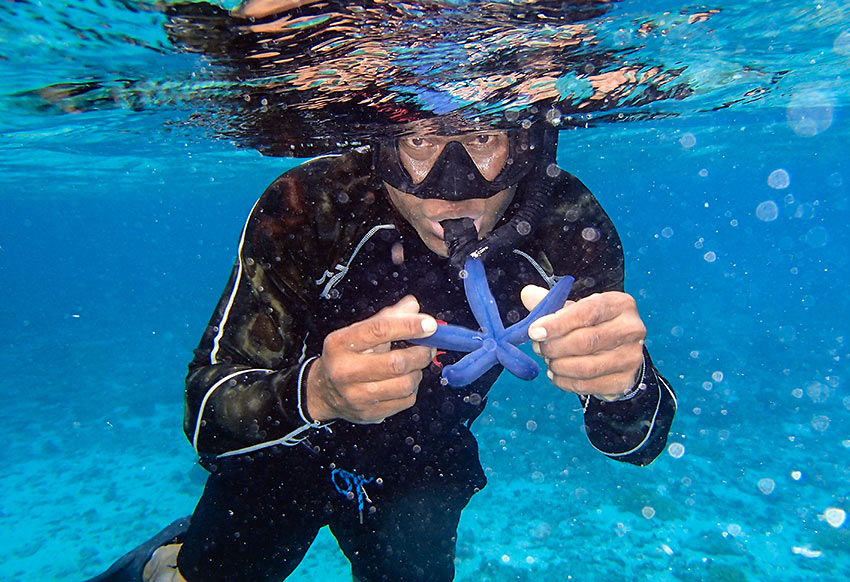
On my last day at Tides Reach, Lebaivalu invited me to visit Wiwi, his village, a half-mile away. Most of the houses, a dozen small huts built in a circle on a grassy field, had vegetable gardens in the rear, with a large grove of coconut palms on the side. Fetching a sulu (a wrap-around skirt) from the car, he handed it to me, turning red. “Shorts are okay at the resort, but the chief is inviting us to his house to share a bowl of kava. It’s traditional,” he said, hesitating. But I’d anticipated the invitation, and had stopped to buy the traditional chief’s gift, a bag of kava.
Our farewell dinner, a sumptuous feast – grilled lobster with roasted garden vegetables and a green salad – was followed by an evening of native dancing and songs performed by kids from the local school, ages 4 to 13 – and mostly girls. After an hour, and lots of photographs, the kids ended the evening with Fiji’s farewell song, Isa Lei.
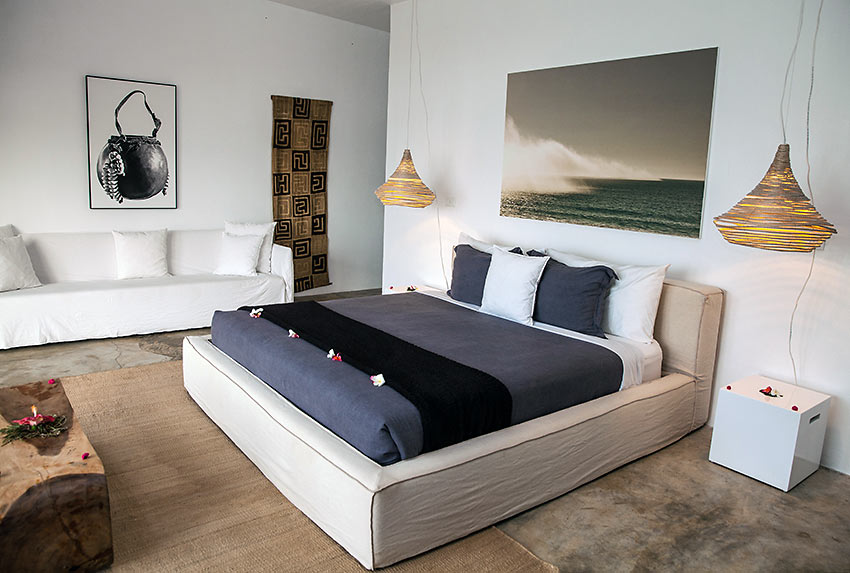
Our last resort, Yasawa Island Resort, in northwest Fiji, was a long way away from Taveuni Island, where we were. But Yasawa is one of Fiji’s most highly rated resorts. Not just deluxe, it’s isolated, completely private, furnished with local art and artifacts, and enjoys a perfect beach location. Guests who arrive by helicopter land on the resort pad at the end of the pier. It was worth the two flights it took to get there.
And we weren’t disappointed. Our private thatched bure, outfitted with every convenience and surrounded by palms and tropical gardens felt genuinely Fijian.
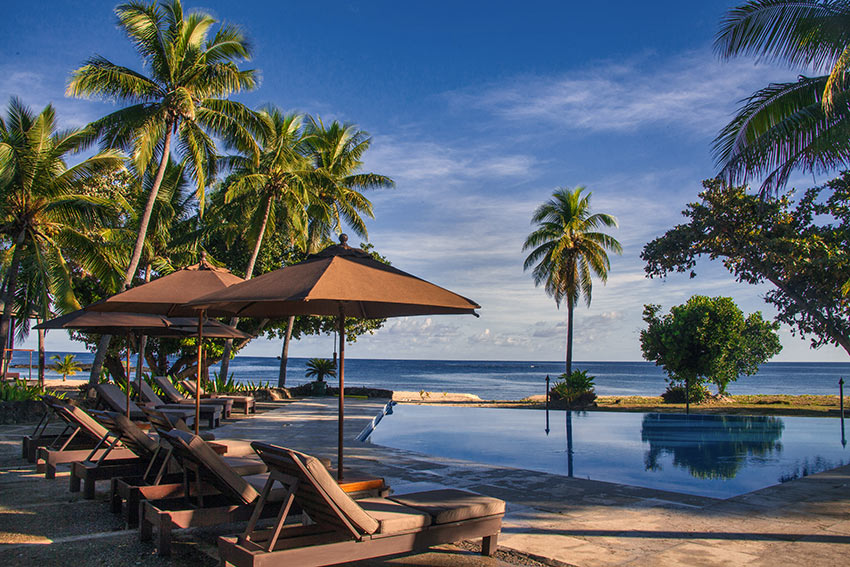
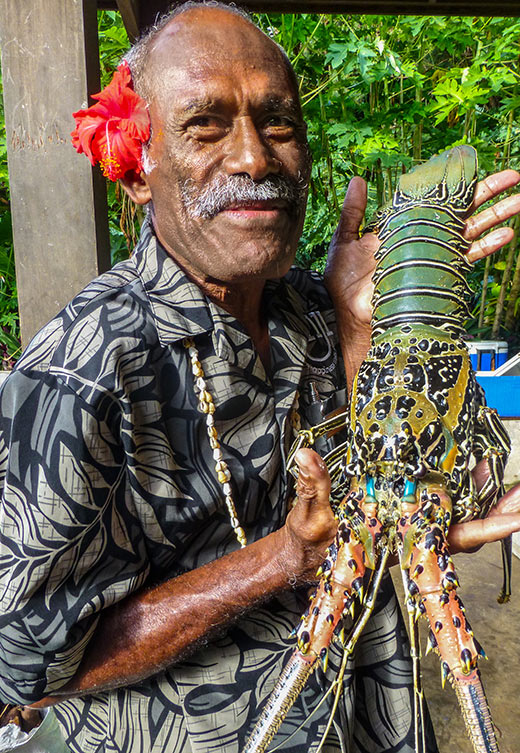
In fact, Yasawa Resort blends the best of a western style resort with the warmth and feel of a Fijian village. Guests may not know it, but the staff here – maids, waiters, guides, kitchen chefs, and gardeners – aren’t just employees. They are the hosts, assuming the responsibility with pride.
Why? Because Yasawa, like most Fijian beach resorts, occupies land owned and managed by the regional and village chiefs, and their clan. The resort is a business partnership with shared traditions, one that that benefits both resort and village.
I did what I always do at Yasawa: I swam, organized a boat ride and beach picnic up the coast, toured Bukama, the local village, snorkeled in the nearby reef, walked along the beach and looked for shells, and spent a day visiting the Blue Lagoon Caves, named for the 1980s movie, “The Blue Lagoon,” filmed in part on Fiji’s Turtle Island.
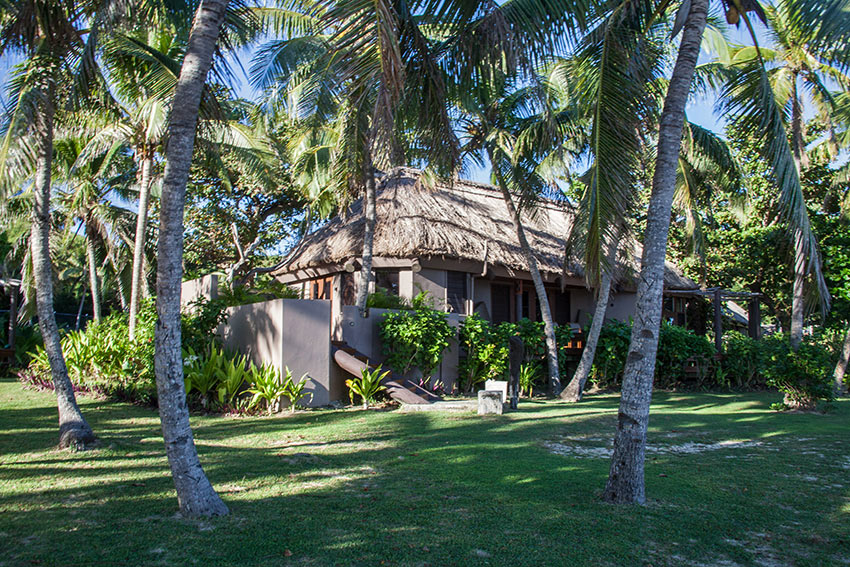
But you don’t just swim into the Blue Lagoon caves. You hold your breath, duck under the water, swim through a narrow channel (guided by a strong, kindly Fijian man) and pop up to find yourself in a hidden, shadowy pool. And each evening, as the sun set over the yardarm, I joined my fellow travelers – kindred spirits all – at Yasawa’s pool-side bar, among the palm fronds and flowers.
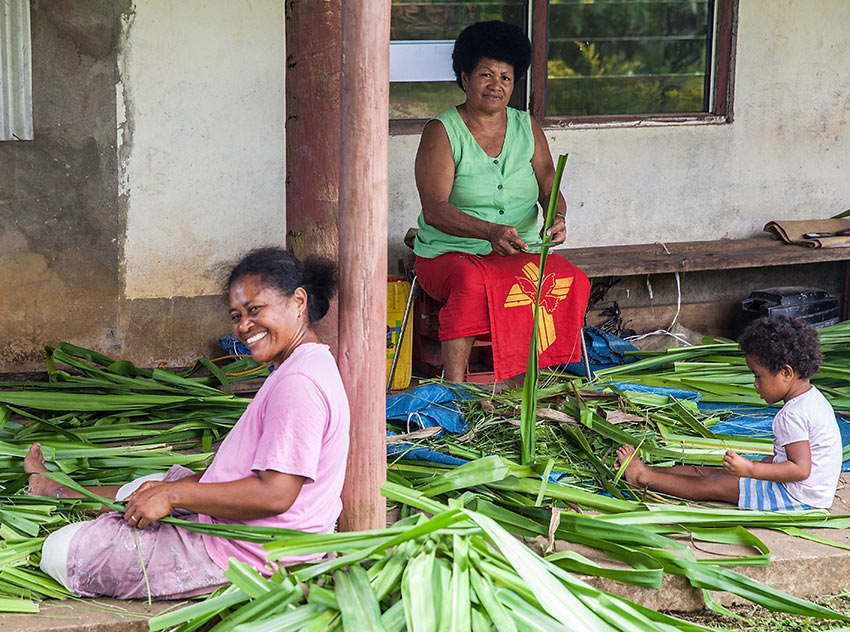
IF YOU GO: Sau Bay Fiji Retreat hosts small weddings, honeymooners, families and scuba divers. A la carte rates keep prices lower than its competitors. Cottages for two or more start at $225 per night but may be discounted. Add $60 per day per person for meals; kids are welcome. Bottled drinks and guides cost extra.
Tides Reach Resort has been discovered by multi-family travelers. Villas for two start at $875 per night; the deluxe villa (for four) is $1275. Or rent the entire resort. Rates include airport transfers, meals, child care, kayaks, paddle boards and snorkel gear. Off-site tours and bottled drinks are extra.
Yasawa Island Resort’s rates per night are all-inclusive, excepting alcoholic beverages. Listed rates start at $1053 for two; frequent discounts are available. Included are kayaks, paddle boards, sports gear, tennis courts, wifi in public areas, non-alcoholic beverages, and most guided outings. Diving, catamarans, sailing, half-day Blue Lagoon Cave trips, village tours and private beach picnics are extra.
The Syndicator2019, Anne Z. Cooke
